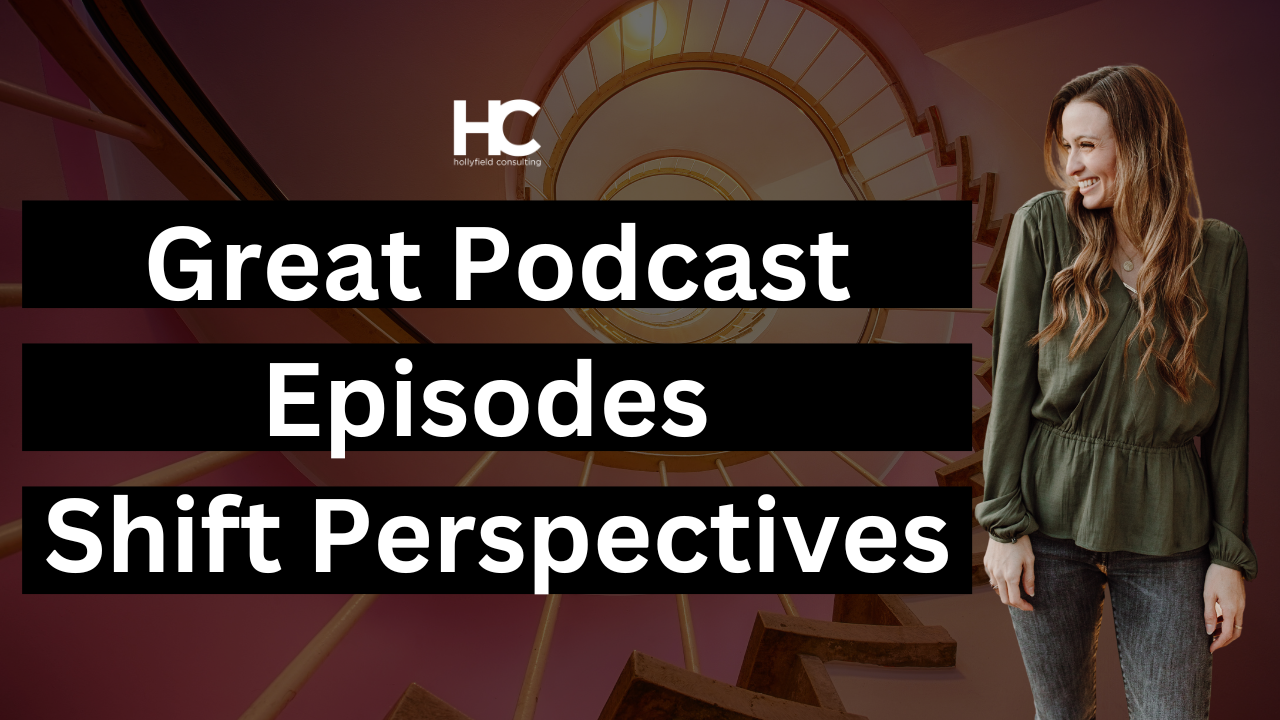Educational content has become NOISE with tools like ChatGPT. Instead of creating another list of five ways to do something, frame your content with a perspective shift! The truth is that people probably aren’t going to implement your suggestions, but they will remember a big perspective-shifting moment that is what will keep them coming back.
While educational content certainly has its place, creating content that shifts perspective adds an extra layer of depth and impact. It challenges the status quo, sparks meaningful conversations, and has the potential to inspire personal growth and social change.
Perspective-shifting content:
Is Engaging and Memorable:
Content that challenges existing perspectives and offers fresh insights tends to be more engaging and memorable. It captures the audience’s attention and leaves a lasting impression, making them more likely to reflect on the content and share it with others.
Creates Emotional Connection:
Shifting perspectives often involves exploring emotions, experiences, and different points of view. This emotional connection can be powerful, helping people relate to the content on a deeper level. It fosters empathy and understanding, creating a stronger bond between the audience and the content creator.
Broadens Horizons:
Educational content typically focuses on imparting specific knowledge or skills, which is undoubtedly valuable. However, content that shifts perspective goes beyond that by challenging assumptions, biases, and limited viewpoints. It encourages critical thinking, broadens horizons, and opens the door to new possibilities and ideas.
Sparks Creativity and Innovation:
Shifting perspectives can stimulate creativity and innovation. By presenting alternative viewpoints, content creators inspire their audience to think outside the box and explore unconventional solutions. This can be particularly valuable in fields like art, design, business, and problem-solving.
Fosters Dialogue and Debate:
When content challenges established perspectives, it often sparks discussions and debates. This exchange of ideas encourages people to critically analyze their own beliefs, listen to different opinions, and engage in constructive conversations. Such dialogue can lead to personal growth, deeper understanding, and the discovery of common ground.
Drives Social Change:
Perspective-shifting content has the potential to drive social change by raising awareness about important issues and promoting empathy. By shedding light on marginalized perspectives or challenging societal norms, content creators can contribute to a more inclusive and equitable society.
Cultivates Empathy and Understanding:
Shifting perspectives helps cultivate empathy and understanding by enabling individuals to see the world through someone else’s eyes. This increased empathy can bridge gaps between people, foster compassion, and facilitate better communication and collaboration.
A podcast episode’s quality is subjective, and different factors may impact listeners differently. Strive to create content that is engaging, informative, well-produced, and resonates with your target audience. No matter what kind of episode you’re creating, chances are there is a perspective shift you can capture!
Shifting someone’s perspective can be a complex and gradual process, but here are some strategies that can help facilitate the shift:
Active Listening:
Start by actively listening to the person and seeking to understand their perspective. Give them your full attention, ask open-ended questions, and genuinely try to comprehend their beliefs, values, and experiences. This demonstrates respect and can lay the foundation for a constructive dialogue.
Empathy and Understanding:
Cultivate empathy by putting yourself in the other person’s shoes. Try to understand the underlying motivations, fears, or desires that shape their perspective. This empathetic approach helps create a safe space for discussion and opens the door to mutual understanding.
Provide Alternative Information:
Introduce new information, facts, or evidence that challenges their existing beliefs. Presenting well-researched data or credible sources can help broaden their perspective and encourage critical thinking. Be respectful and considerate in your delivery to avoid triggering defensiveness.
Appeal to Emotions and Values:
Emotions and values often play a significant role in shaping perspectives. Connect with the person on an emotional level by sharing personal stories, experiences, or anecdotes that relate to the topic at hand. Highlight shared values and explore how a shift in perspective aligns with those values.
Use Thought-Provoking Questions:
Pose thought-provoking questions that encourage introspection and self-reflection. Ask the person to consider alternative viewpoints or imagine themselves in different scenarios. Thoughtful questions can stimulate cognitive dissonance, prompting individuals to reevaluate their beliefs.
Encourage Exposure to Diverse Perspectives:
Encourage the person to engage with diverse perspectives through books, articles, documentaries, podcasts, or engaging in conversations with individuals who hold different viewpoints. Exposure to a variety of ideas can challenge preconceived notions and expand their understanding of the topic.
Foster Constructive Dialogue:
Create a safe and respectful environment for open dialogue. Encourage the person to express their thoughts and concerns while also expressing your own perspective. Avoid personal attacks, listen actively, and respond with empathy and understanding. This helps build trust and encourages a healthy exchange of ideas.
Patience and Incremental Progress:
Changing someone’s perspective takes time and patience. Recognize that it may not happen overnight and that incremental progress is still valuable. Avoid pushing too hard or becoming confrontational, as it can lead to defensiveness and resistance. Gradual shifts are often more sustainable and meaningful.
Remember that shifting someone’s perspective is ultimately their own journey, and you cannot force or control it. Your role is to create an environment that fosters growth, understanding, and critical thinking. Approach the process with empathy, respect, and a genuine desire to engage in meaningful dialogue.




























